There are things we wish we had discovered earlier because they are so amazing. It’s only in May this year that I discovered Nature Kenya, even though it’s been in existence for ages (since 1909 actually, when it was founded as the East African Natural History Society). It is a non-profit conservation organisation that works to promote the understanding and conservation of nature. To find out what I like about N.K, read on…
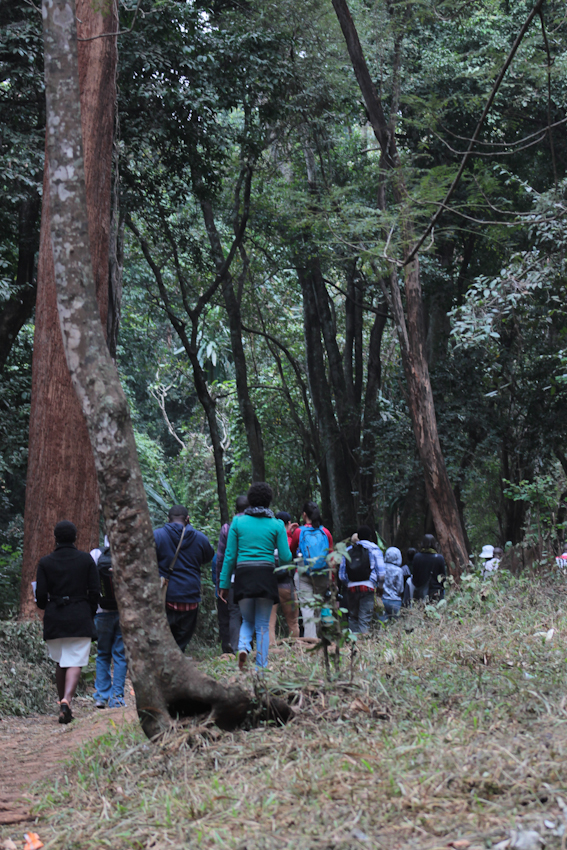
Nature Kenya holds birdwalks every Wednesday morning from 8.45 am to 12.30 pm. They are free for members but non-members pay a small fee (200/-). Apart from seeing various bird species, what makes it interesting is going to different locations. For the first one and a half months that I went for the walks, we didn’t repeat a location. On the third Sunday of every month, there is an all-day walk mostly out of Nairobi.
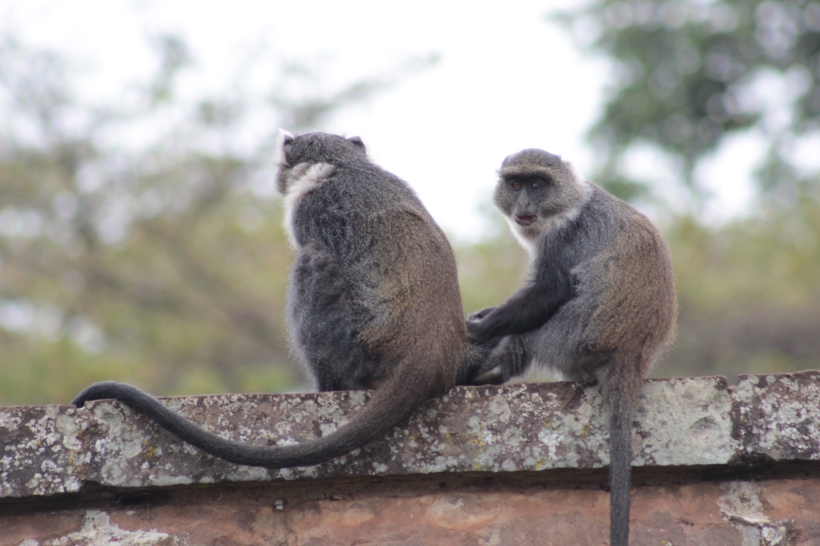
We usually meet at the National Museum for briefing by the leader Fleur then proceed to the venue of the walk. Transport is available from NK (one Land Rover) and also those who have cars offer lifts. They say birding is addictive. Once you start, there’s no looking back…I was introduced to it by my pal Kiringo- read about it here.That’s what piqued my interest for the NK walks. To catch up on my first (and very exciting!) NK walk, check it out here.Since then, I feel very upset when I’m not able to go for the birdwalk.In the next few paragraphs I’ll let you in to some of the walks I’ve attended so far…enjoy.
Uhuru Gardens
On that Wednesday, the National Museum was closed to the public. I had seen the notice in the newspaper earlier but didn’t think much of it. Until I got to the gate and saw everyone being turned away. I called one of the NK staff only to be told people would not be meeting at the Museum but at the birdwalk venue…all the way in Lang’ata. The legendary Lang’ata Road traffic had me doubting whether I would make it in time. On my way there I met with a fellow birder and we did our best to hurry. To my relief there wasn’t much traffic that day.

During my first visit to Uhuru Gardens years earlier I was quite unimpressed. The grounds looked desolate, like a grazing area. So on this Wednesday I wasn’t too optimistic about the outcome. At first the sightings were few but with time we spotted some really cool species that I’d never seen before. Like the Grey-headed kingfisher. Unlike most Kingfishers, this one is not aquatic. It feeds mostly on small reptiles. Despite its small size, this Kingfisher fiercely protects its nest from monitor lizards by dive-bombing them. Wow!
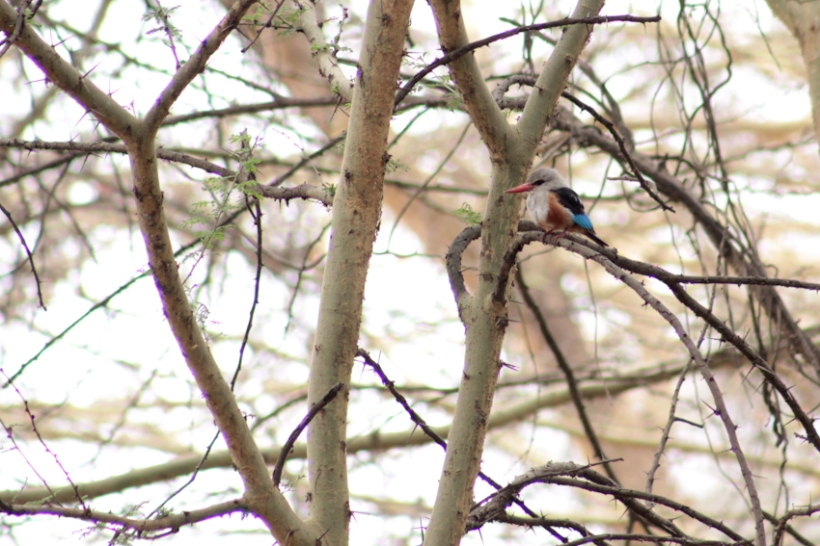
City Park
This place has such a breathtaking forest. It’s hard to believe you’re still in the city. The air is so fresh and there are vines strong enough to sit on! On the day we went there the birds hid in the branches a lot. That’s a major challenge when birdwatching in a forest. I captured some Bronze manikin as they were busy feeding on seeds in an open area of the Park.
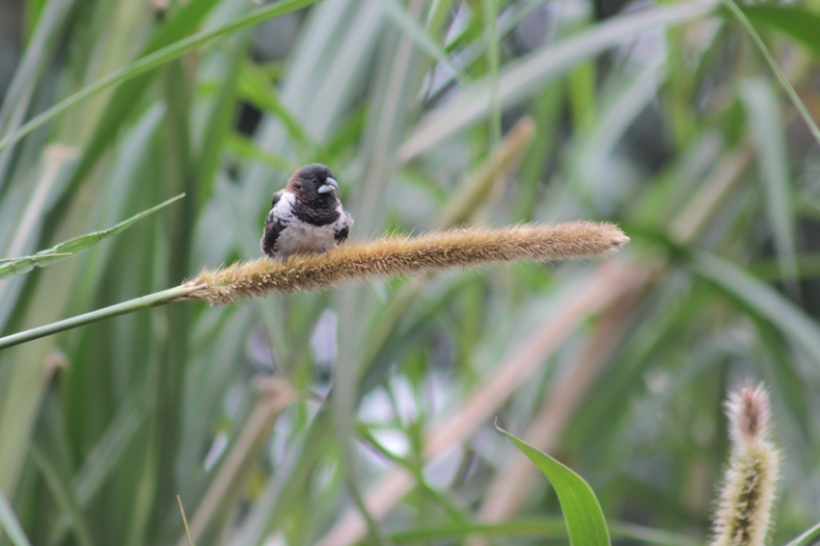
Karura Forest
We went to the northern section of this forest. One of the main attractions was to be a Crowned eagle and its young one. This eagle feeds on mammals such as monkeys, so you can imagine how big it is. We approached the nest area and stayed a few minutes…but the birds refused to appear. Some people claimed to have seen a white wing (of the chick) but that was an underwhelming outcome. Anyway, some butterflies gave us a show.
As we were leaving we spotted a Mountain wagtail, and a Great sparrowhawk aggressively keeping off monkeys from its nest (it had young ones). It was an interesting sight. A bird fighting monkeys much bigger than itself for the sake of its young.
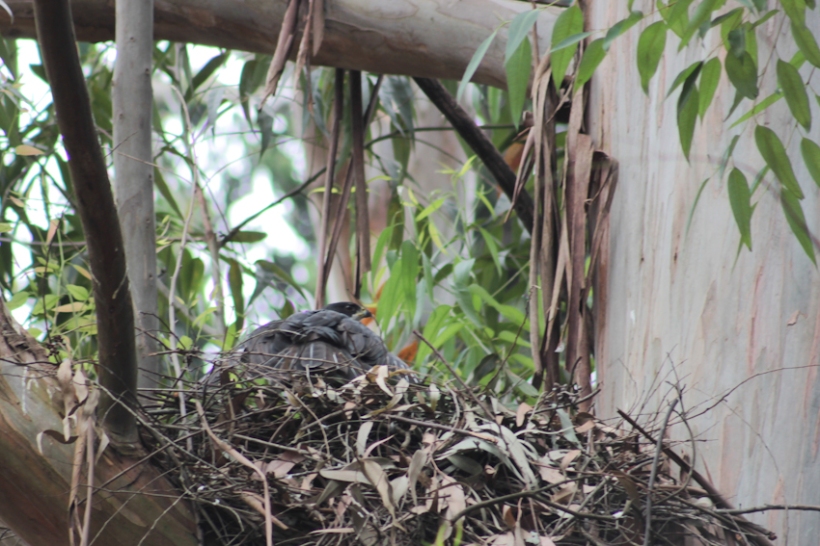
Paradise Lost
This is a protected area within a coffee farm in Kiambu. The owners of the farm took it upon themselves to conserve the place. On that Wednesday we began by stopping at a pond where Village weavers were building their nests. The males make a nest, invite a female to ‘inspect’ and if she doesn’t like it, the male has to start over. Talk about hardships in courting!
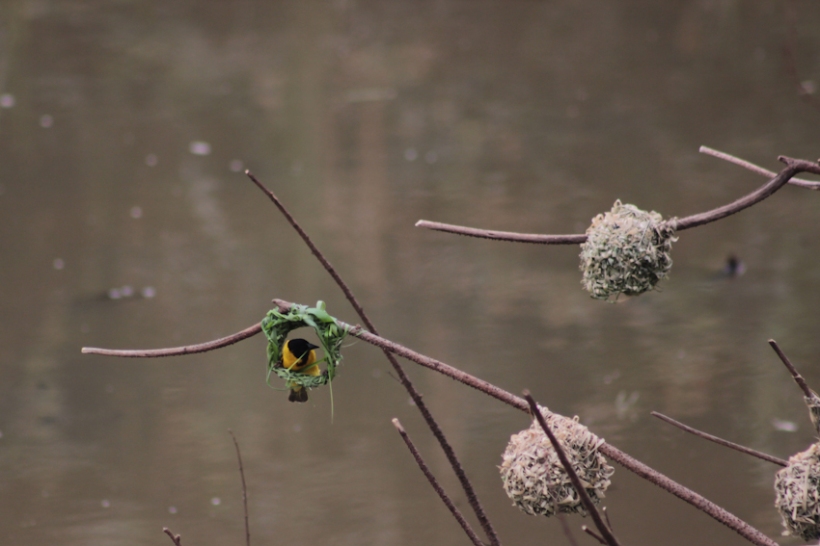
At another pond, there were lots of water birds having a great time. Yellow-billed ducks, African jacana, Malachite kingfisher (my first sighting) and many others.
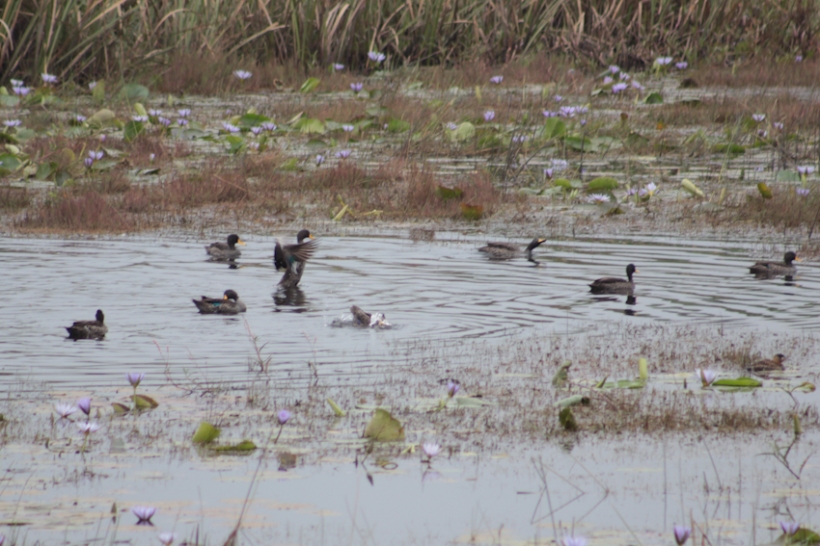
After visiting the main attraction- waterfall with caves behind it- we concluded the walk. Time was up but nobody felt like leaving. This place is amazing. As we walked towards the vehicles I happened to spot a Long-crested eagle. It’s a beautiful bird of prey with a very ‘stern’ look. A very special bird to NK because they use it as their logo. That was a great way to end the walk.
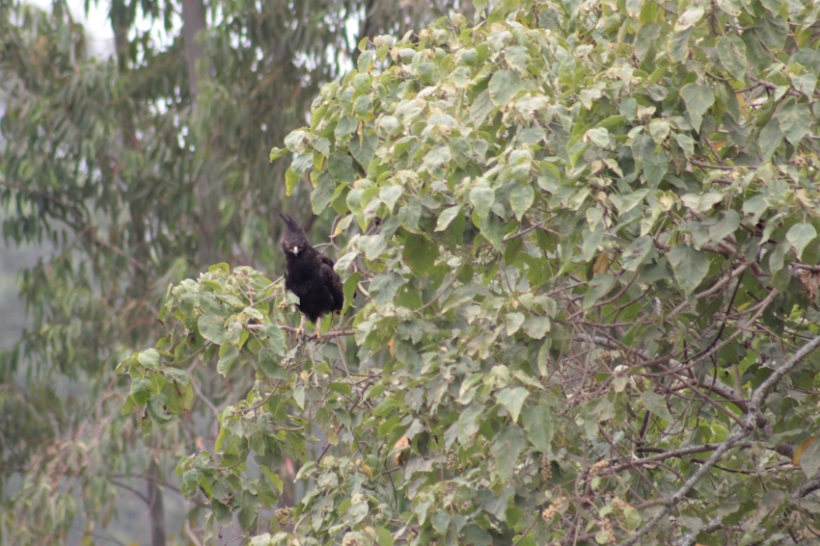
University of Nairobi Upper Kabete Field Station
On this morning, there was a heavy downpour. As soon as I arrived at the Museum the clouds let loose. The short rains had just begun after a long delay. It was a relief but we were very concerned that the birdwalk might not happen. I wondered if I should just have remained in bed that morning…To my surprise, a good number of people showed up. That’s how you tell the diehards from the…from the rest.
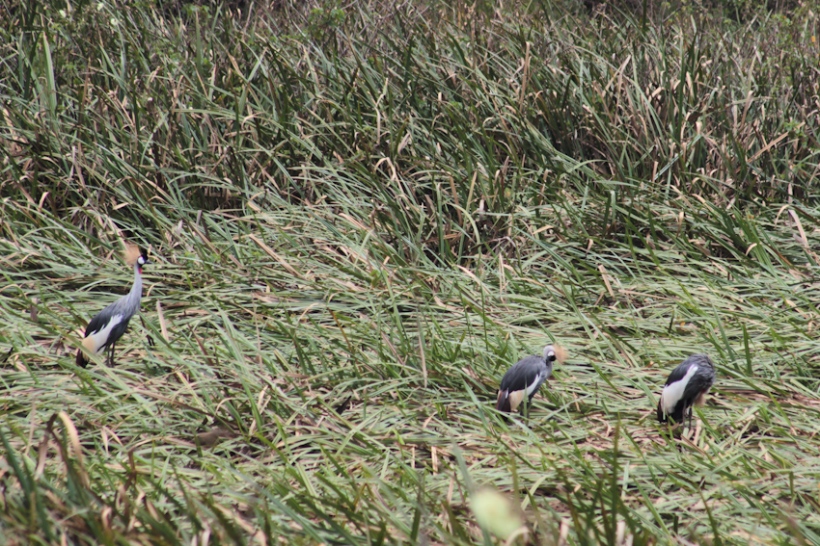
We were informed that after a downpour is one of the best times to see birds. They come out to feed on insects that emerge from the soil. The rain cleared up and we experienced it firsthand. We even spotted some migrants from Europe, like the Yellow wagtail and Eurasian bee-eaters.
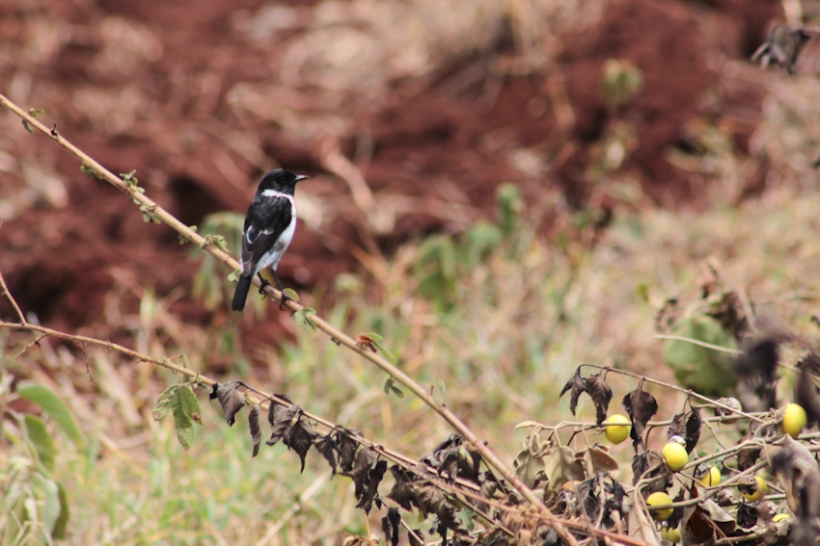
My shoes were muddy but I didn’t mind. I was having fun. And in contrast to the morning, the scorching sun came out as noon approached. There were 3 beautiful Grey crowned cranes in some reeds, and for the first time I saw a Common stonechat. The climax was seeing another migrant- the Eurasian nightjar. It’s a nocturnal bird so the sighting was quite exciting.
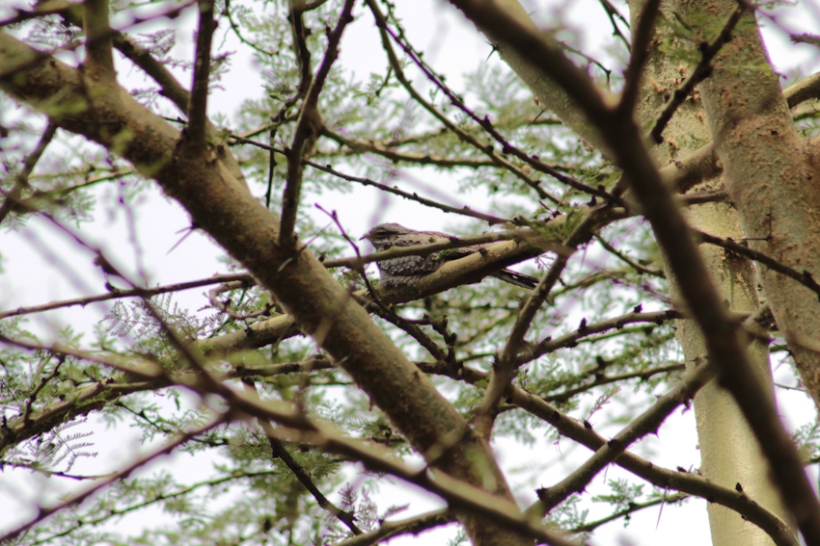
Private Residence in Karen
The excitement began before we even got there- we saw bats in the city centre. They were awake and making lots of noise! For those familiar with Nairobi, look out next time you’re on Uhuru Highway. When you get to the palm trees near Laico Regency, stop and listen for squeaky noises. Then look up at the palm trees where the fronds meet. You can thank me later. 🙂
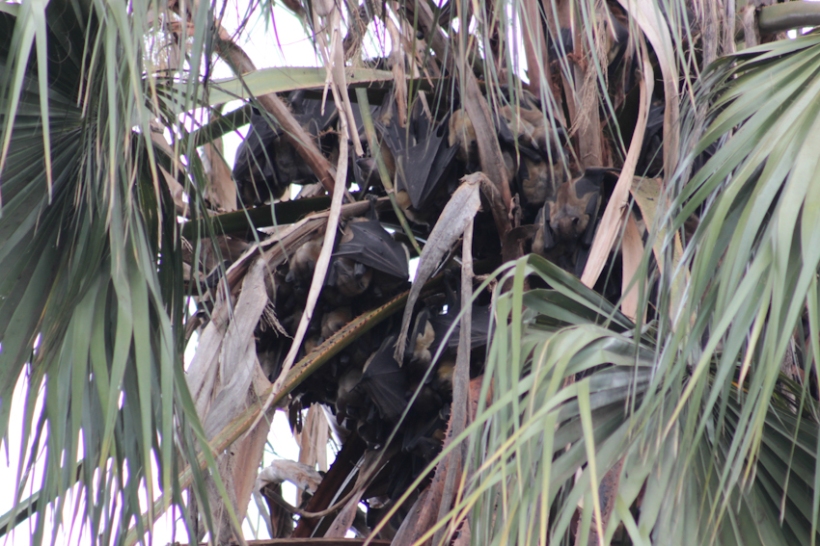
At the birdwalk venue we spotted so many species, more than 50. The pond was a major point of interest with a flock of about 30 Egyptian geese. At the end, just when we thought we had concluded…I saw a Hartlaub’s turaco. A very fulfilling end to the walk.
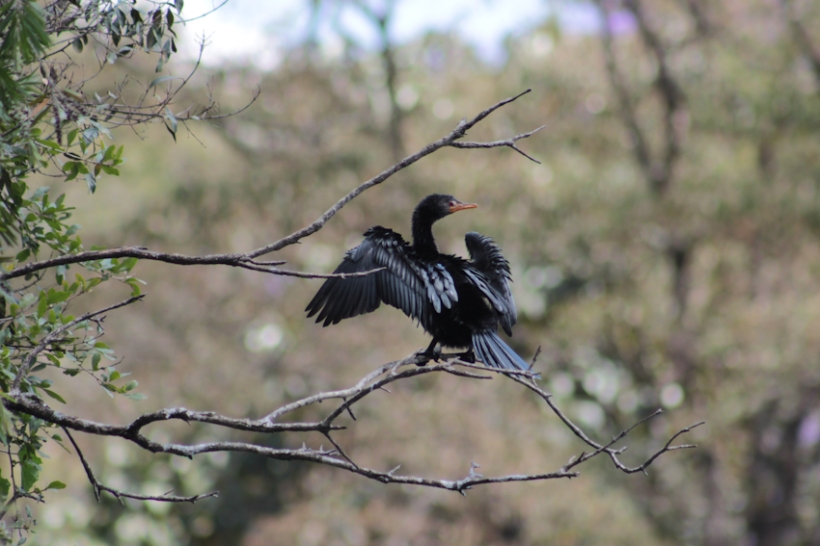
Ndeiya
This was a new location for us. One of the members had invited us to his home area. It was a rainy morning but still we forged on. The roads in that place though, let me just say…are a shame to whoever is constructing them. Barriers had been put to protect the tarmac sections, although it looked like the tarmac had set months ago. With that slow pace, when would the contractor ever finish? We wondered. The vehicles were turned into ski mobiles as we drove on the mud.
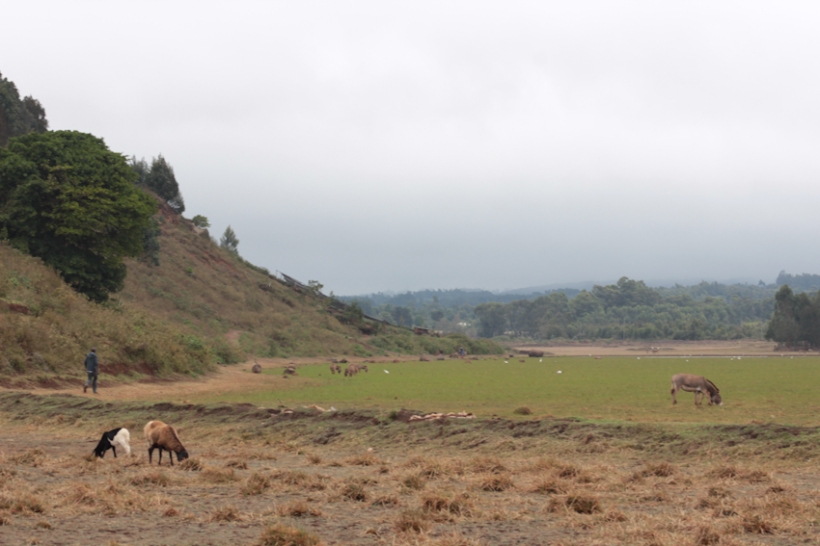
When we arrived my fingers immediately went numb. The cold wasn’t playing. How do the residents survive? Anyway, the scenery was beautiful. There were so many birds at the water body and the surrounding vegetation. Just as we were getting into it, the rain cut us short. We had to turn back in case the awful roads got even worse. For the one hour we were there, we spotted 40 bird species! Imagine how many more we would have seen.
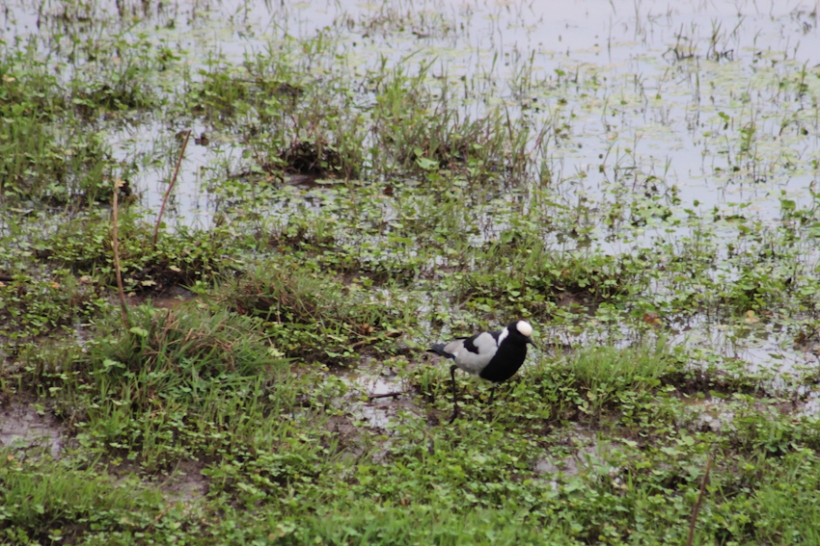
If you’ve been wondering where to have nature walks in Nairobi, now you know. It’s very affordable and you get to go to many places for free (you don’t pay entrance fee for places that charge). Also, your fitness levels improve significantly. Walking for 3 hours every Wednesday is no joke! Not to mention the therapeutic effect of being surrounded by nature. Give it a try- you’ll be left with many beautiful memories!
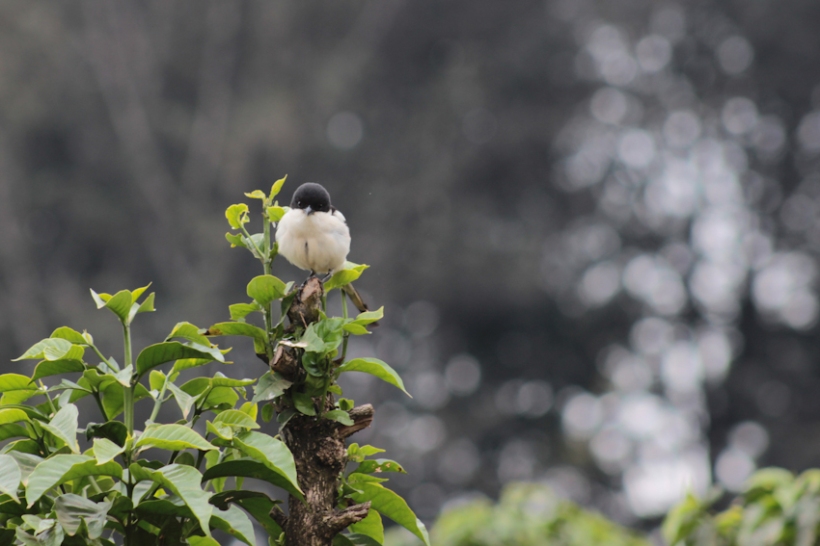



These bird pics are really cool
LikeLike
Thanks Dee much appreciated!
LikeLike
Fabulous photos Mitch and very informative too. You will always find fascinating birds in the places you least expect. I didn’t even know there are so many places to visit in Nairobi ata hapa home Ndeiya! I see so many lifers to me too but the Eurasian nightjar and crowned eagle do it for me kabisa. Learnt something new about Paradise Lost too. Wish more people actually realized setting land apart for nature preservation can be so beneficial. And feels nice to be mentioned here. U goin places Mitch.
LikeLike
Indeed, birds are so interesting. Showing the beauty of this country through images is my aim- and to achieve it brings much joy. And how can I not acknowledge you with all your support? Asante sana.
LikeLike
Amazing
LikeLike
Indeed.
LikeLike
One word #TembeaKenyaNatureKenya
LikeLike
Kabisa.
LikeLike